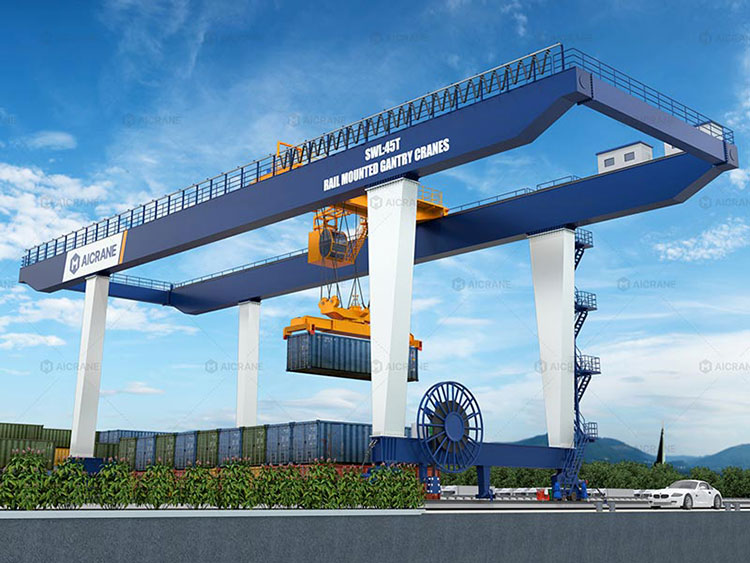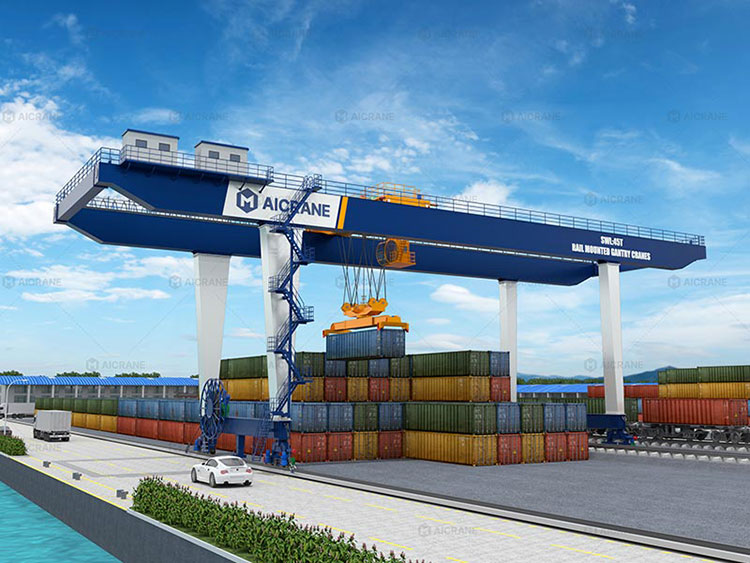Purchasing a Rail Mounted Gantry (RMG) crane is a significant investment for ports, logistics centers, and industrial facilities. The timing of this purchase can have a substantial impact on cost, lead time, customization options, and installation efficiency. Understanding the seasonal trends in procurement, manufacturing, and logistics can help buyers secure better deals, avoid delays, and ensure their projects run smoothly. This article explores the factors affecting RMG crane purchase timing, the optimal windows for buying, and practical strategies to maximize value.

1. Understanding the RMG Crane Market
Before considering seasonality, it is important to understand the characteristics of the RMG crane market. RMG cranes are heavy-duty, rail-mounted lifting systems designed for precise and efficient movement of containers, steel products, or other large loads. They are often custom-engineered to meet the specific requirements of span, lifting height, leg clearance, rail gauge, and control systems.
1.1 Demand Fluctuations
The demand for RMG cranes is influenced by infrastructure projects, port expansions, and logistics upgrades. Many large-scale projects follow budget cycles, which can create periods of high demand. Ordering during these peak periods may result in longer lead times and higher costs due to increased manufacturing backlogs. Conversely, quieter periods in the market can provide greater flexibility for customization and shorter delivery schedules.
1.2 Manufacturing Considerations
RMG cranes involve complex fabrication processes, including steel structure assembly, electrical system integration, and installation of advanced control systems. Manufacturing capacity is limited, so timing your order relative to a manufacturer’s workload can directly affect lead times. Early engagement with container gantry crane manufacturers can help secure production slots before the onset of peak demand periods.
1.3 Logistics and Installation
Delivery and installation logistics also play a role in seasonal planning. RMG crane components are large and heavy, requiring specialized transportation and lifting equipment for on-site assembly. Seasonal factors such as shipping congestion, weather conditions, and labor availability can impact installation schedules, particularly in regions with extreme climates.
2. Why Timing Matters
The timing of an RMG crane purchase affects several key factors:
2.1 Lead Time
Because RMG cranes are highly customized, lead times can be substantial. Ordering during a low-demand period can reduce production backlog and allow more time for customization. On the other hand, ordering during high-demand periods may force buyers to accept standard models or face delayed delivery.
2.2 Pricing
Material costs, particularly steel, fluctuate throughout the year. By timing your purchase when raw material prices are stable or lower, you can reduce overall expenditure. Additionally, manufacturers may adjust rail mounted gantry crane price based on seasonal demand, with peak periods often resulting in higher costs.
2.3 Shipping and Logistics
Shipping large crane components is more challenging during periods of high global freight demand, typically in late summer and before the end of the year. Booking shipments during quieter periods can minimize risk of delays and reduce freight costs.
2.4 Project Scheduling
For buyers integrating an RMG crane into larger infrastructure or industrial projects, aligning procurement with project timelines is essential. Ordering too early may result in storage costs if the site is not ready for installation, while ordering too late can delay project completion.

3. Optimal Purchase Windows
Based on seasonal demand and production cycles, there are ideal periods for purchasing an RMG crane:
3.1 Late Q1 to Early Q2
This is often the most favorable period for placing an order. After the year-end rush of budget approvals, manufacturers may have more available capacity. Raw material costs tend to be stable, and shipping logistics are less congested compared to later in the year. Orders placed in this window often benefit from shorter lead times and more customization options.
3.2 Mid to Late Q2
Ordering during this period can be advantageous for projects aiming for summer or autumn installation. Manufacturers still have some capacity available, and buyers can secure delivery slots before the summer peak when labor availability may be reduced. This window allows flexibility in scheduling fabrication, shipping, and on-site assembly.
3.3 Late Q3 to Q4 – Exercise Caution
The end of the year often sees a surge in orders as companies aim to utilize budget allocations or complete projects before fiscal year-end. This can result in longer lead times, increased costs, and shipping congestion. If a purchase must occur in this period, early engagement with gantry crane manufacturers and strict scheduling agreements are critical to avoid delays.
4. Additional Timing Considerations
4.1 Manufacturing Backlog
Even within ideal windows, manufacturers may have pre-existing orders. Confirming production schedules early ensures your project is prioritized and prevents unexpected delays.
4.2 Installation Season and Local Climate
Installation timing should consider regional weather patterns. For areas with harsh winters or rainy seasons, scheduling installation in spring or early summer reduces the risk of weather-related delays.
4.3 Budget Cycles
Aligning purchase timing with company budget approvals ensures sufficient funding and reduces last-minute rushes. Some manufacturers may also offer incentives during slower periods, such as complimentary commissioning or discounted spare parts.
4.4 Technology Updates
Advanced features like automation, remote operation, and digital monitoring may have new versions released periodically. Understanding these cycles can help buyers decide whether to purchase immediately or wait for updated models with improved performance.
5. Strategies to Maximize Value
To make the most of seasonal purchasing opportunities, buyers should:
-
Define Scope Clearly: Establish specifications such as lifting capacity, span, rail gauge, control mode, and safety systems to avoid scope creep and additional costs.
-
Negotiate Delivery and Installation: Link pricing to delivery milestones and installation schedules. Include buffers for potential seasonal delays.
-
Plan for Spare Parts and Maintenance: Ensure spare parts are readily available and account for lead times to prevent downtime.
-
Coordinate Logistics Early: Secure shipping slots and monitor freight schedules to avoid delays caused by peak-season congestion.
6. Practical Recommendations
For businesses planning to buy gantry cranes:
-
Initiate procurement 12–18 months in advance of desired installation to accommodate fabrication, shipping, and on-site assembly.
-
Aim for Q1 or early Q2 orders to take advantage of manufacturer capacity and avoid year-end rushes.
-
Align crane delivery with project readiness to minimize storage costs and ensure smooth installation.
-
Maintain close coordination with the manufacturer and installation team to monitor milestones and preempt delays.
-
Consider labor and climate factors when scheduling on-site assembly, as these can impact both cost and installation efficiency.
7. Conclusion
Seasonal trends play a crucial role in the procurement of Rail Mounted Gantry cranes. By understanding market demand cycles, manufacturing schedules, material cost fluctuations, and logistics considerations, buyers can strategically select the best time to purchase. Early-year procurement, careful planning, and proactive coordination with manufacturers and installation teams can result in shorter lead times, lower costs, and a smoother project execution. Properly timed purchases not only ensure that the crane meets operational needs but also optimize overall investment value, making seasonality an important factor in any RMG crane acquisition strategy.
